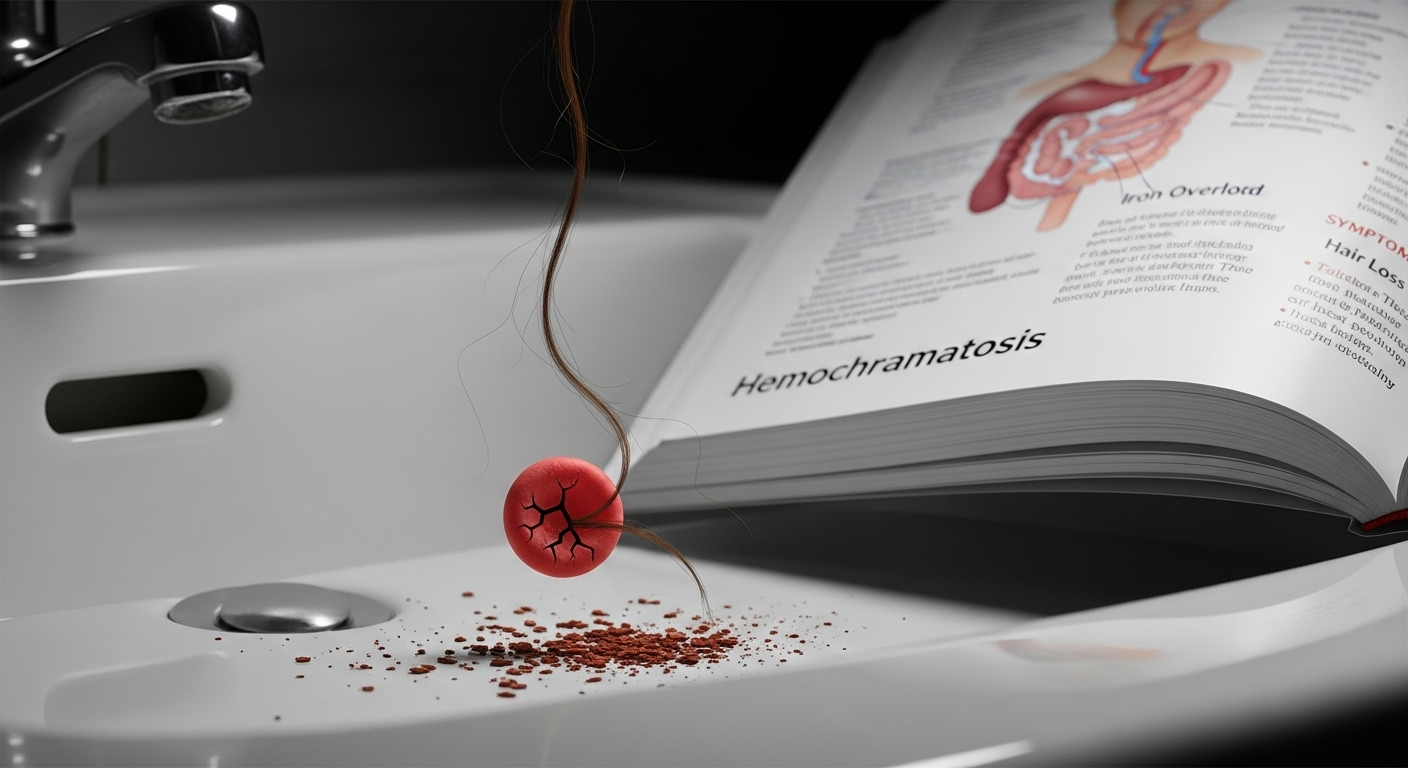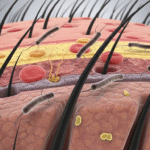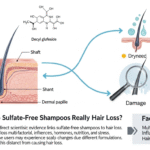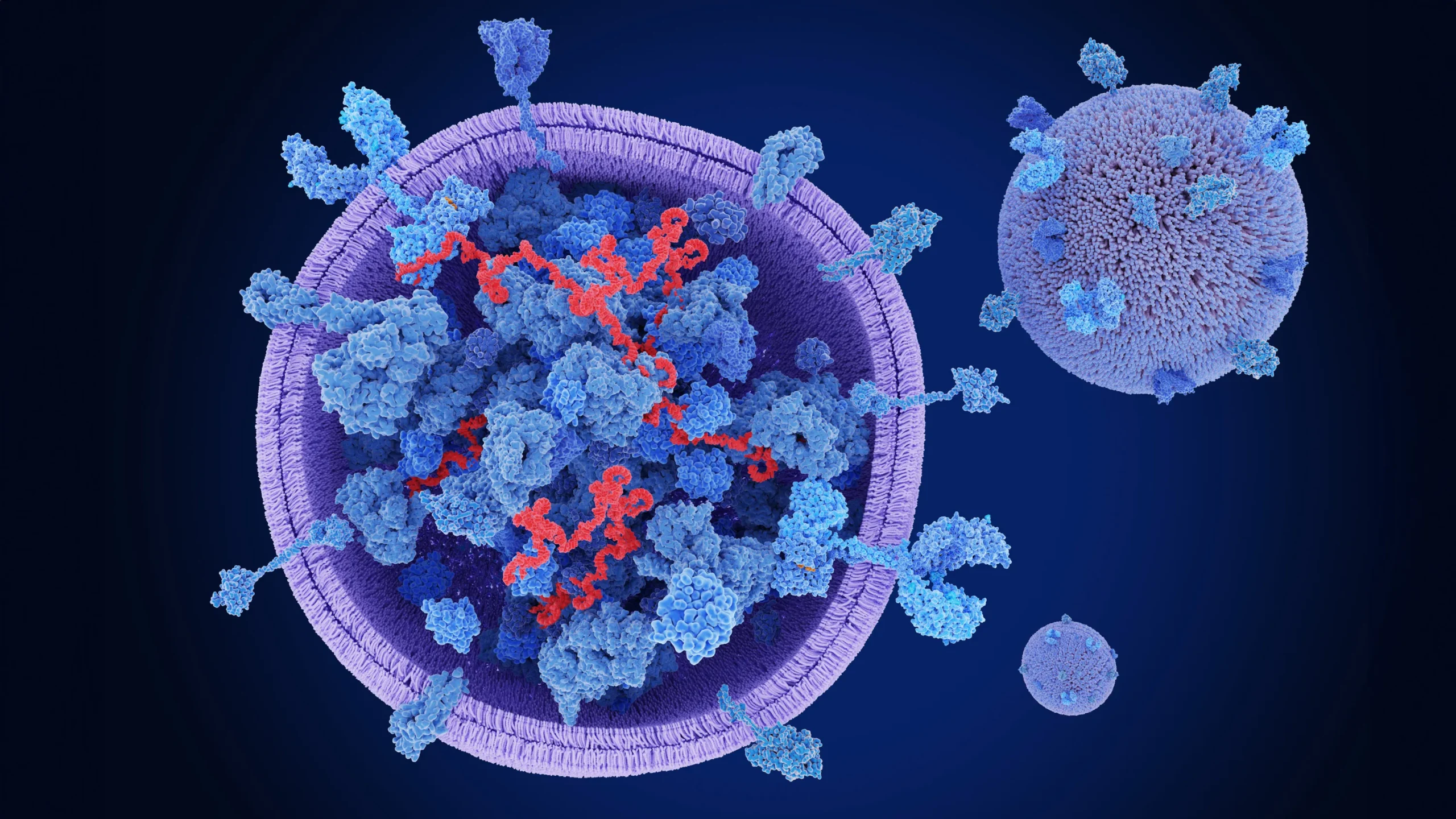Noticing unexplained hair loss and wondering if it could be more than just genetics or stress? You might be asking: does hemochromatosis cause hair loss? Hemochromatosis is a condition where the body absorbs and stores too much iron, which can damage various organs and potentially contribute to scalp inflammation and hair thinning. This guide explores …
Noticing unexplained hair loss and wondering if it could be more than just genetics or stress? You might be asking: does hemochromatosis cause hair loss? Hemochromatosis is a condition where the body absorbs and stores too much iron, which can damage various organs and potentially contribute to scalp inflammation and hair thinning.
This guide explores the scientific connections, expert insights, and recovery strategies to help you take control of your iron levels and your hair health.

What Is Hemochromatosis?
Hemochromatosis is a genetic disorder characterized by excessive iron absorption and storage in the body. There are two primary types:
- Primary hemochromatosis: Inherited, most commonly linked to mutations in the HFE gene.
- Secondary hemochromatosis: Caused by conditions such as chronic liver disease or frequent blood transfusions.
Common symptoms include:
- Chronic fatigue
- Joint pain
- Skin discoloration (bronzing)
- Diabetes
- Liver damage
Excess iron builds up in organs such as the liver, pancreas, heart—and possibly the scalp—contributing to oxidative stress and inflammation.
Does Hemochromatosis Cause Hair Loss?
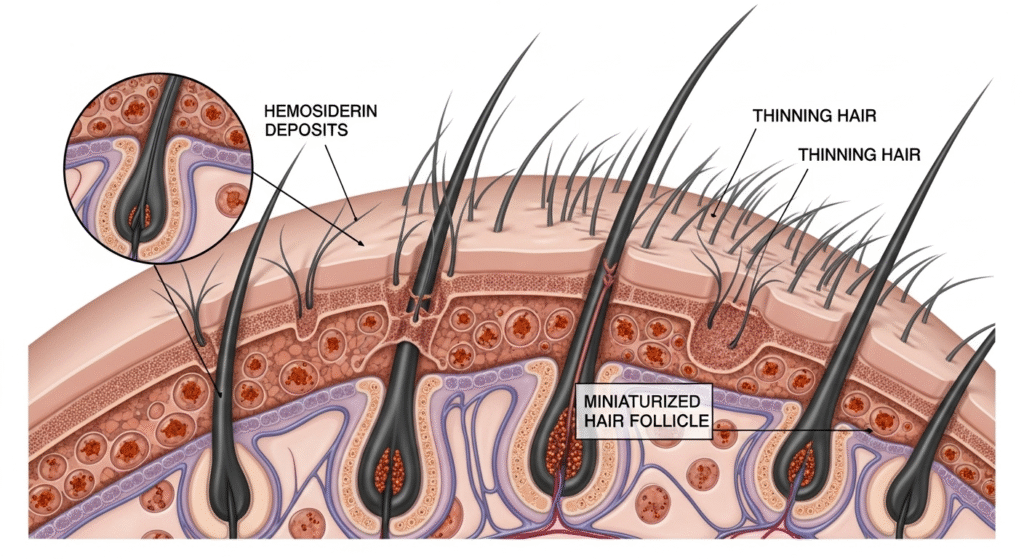
While not always discussed as a primary symptom, hemochromatosis can indirectly lead to hair loss through:
- Oxidative stress: Iron overload can trigger free radicals that damage hair follicles.
- Inflammation: Elevated iron may promote inflammatory responses in scalp tissue.
- Hormonal imbalance: Iron affects glands like the thyroid and pituitary, influencing hair cycles.
- Nutrient disruption: High iron can impair absorption of zinc, biotin, or vitamin E—critical for hair health.
These disruptions can trigger telogen effluvium (a condition where hair shifts prematurely into the shedding phase).
Other Symptoms That May Occur with Hair Loss
Hair loss caused by hemochromatosis often occurs alongside other systemic symptoms:
- General weakness or fatigue
- Mood swings or depression
- Skin changes like hyperpigmentation
- Reduced libido or hormonal shifts
- Brittle nails and dry skin
Recognizing this combination can help prompt testing and earlier diagnosis.
What Do Doctors and Studies Say About Hair Loss and Hemochromatosis?

Though not widely documented, several medical case reports and dermatologist observations support the link:
- Studies have also suggested oxidative damage from excess iron as a potential trigger for follicle miniaturization.
How to Test for Hemochromatosis If You’re Experiencing Hair Loss
If you suspect iron overload, speak to your doctor about the following tests:
- Serum ferritin
- Serum iron
- Transferrin saturation percentage
- HFE gene mutation testing
- Liver function tests or MRI (for iron in organs)
These can confirm both the presence of hemochromatosis and its severity.
Can Hair Regrow After Treating Hemochromatosis?
Yes—especially if caught early. Once iron levels normalize through treatment, hair often begins to regrow within 3–6 months.
Main treatments include:
- Therapeutic phlebotomy: Regular blood removal sessions to reduce iron
- Iron-chelating medications (if phlebotomy is contraindicated)
- Lifestyle adjustments: Avoiding iron supplements, limiting vitamin C intake, reducing red meat
Hair and Scalp Care Tips for Hemochromatosis Patients
While managing iron levels, also support your scalp health:
- Use antioxidant-rich, sulfate-free shampoos
- Avoid tight hairstyles and chemical treatments during flare-ups
- Try scalp massage or low-level light therapy to stimulate blood flow
- Follow a nutrition plan guided by your physician (avoid self-medicating with vitamins or minerals)
FAQs
Can high iron levels damage hair follicles?
Yes, excess iron can promote oxidative damage, harming follicle health.
Is hair loss from hemochromatosis permanent?
Not usually—most patients experience regrowth after treatment begins.
How fast will hair regrow after phlebotomy?
Visible improvement may start in 2–3 months, with fuller recovery by 6–12 months.
What’s the difference between iron-deficiency and iron-overload hair loss?
Deficiency weakens hair structure due to lack of oxygenation; overload causes follicle inflammation and toxicity.
Should I stop taking supplements if I suspect iron overload?
Yes. Always consult your doctor before taking iron-containing supplements
Conclusion
Hemochromatosis is often overlooked as a potential cause of hair loss, but excess iron can indeed disrupt healthy hair cycles. By recognizing symptoms early and undergoing appropriate testing, most people can restore both their health and hair.
Suspect high iron may be causing your hair loss? Book a consultation with Dr. Uzma Irfan, an ISHRS-certified surgeon in Islamabad today. Our specialists can help evaluate your iron levels, create a custom treatment plan, and guide your recovery.

